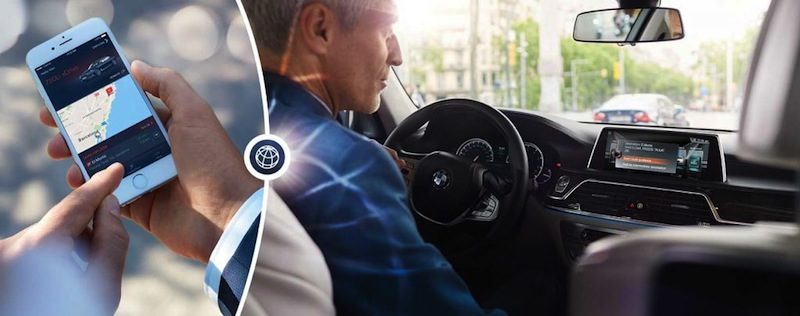
Connected vehicles will enhance traffic safety and efficiency
Let’s be quite clear about this, European road traffic safety policy is a success story!
Road accident related fatalities have more than halved (2001- 2017), despite increasing traffic volumes. However, with 25,300 fatalities in 2017 a greater coordination of policy effort is needed for further significant reductions.
It is widely reported that over 90% of road accidents are attributable to human error. Assisting the human in the driving task is therefore a logical way forward.
Today’s advanced driver assistance functions have the ability to further reduce accidents by 30% in our estimation.
Those functionalities include forward collision warning, emergency braking, crossroads warnings or the usage of night vision devices, just to name a few.
While introducing such innovations and increasing levels of automation the BMW Group and the automotive industry fully supports the strategy of the EU Commission to encourage the deployment of cooperative intelligent transport systems (C-ITS).
C-ITS uses connectivity technologies to enable road vehicles to communicate with other vehicles, road users and roadside infrastructure. Communicating information such as approximate position, speed, direction of travel or time remaining on green for a traffic light can improve traffic efficiency by providing added value information to vehicle drivers.
Aggregated C-ITS information also helps drivers optimize their journey and in some cases can warn of imminent collision thereby improving safety.
The transmission of C-ITS messages should be done via the license-free frequency band around 5,9GHz which is reserved for this purpose.
As of today there are two competing technologies being considered for communication in this spectrum band.
Both technologies are not directly compatible.
1. The cellular technology is a new evolution of LTE, the so called LTE-V standard. This technology is able to communicate from car-to-car and / or from device-to-device even without existing network coverage and is a precursor of the 5G communication standard.
2. ITS G5 Wi-Fi technology (sometimes known as DSRC) accredited formally by IEEE for car-to-car and car-to-infrastructure communication.
The BMW Group will implement the Commission’s hybrid technology strategy consisting of a cellular backend-based communication and short-range communication (in our case, LTE-V, 5G): we ensure that drivers get precise and validated information early enough, and all valuable information is distributed to relevant local participants.
If there is an accident, warnings will occur 5km in advance, not just a few hundred meters before getting there.
Thus, connected vehicles can significantly lower the number of accidents caused by human error.
Full exploitation of safety and efficiency benefits depends on the way information is shared amongst traffic stakeholders.
We decided several years ago that safety-related C-ITS is not a differentiating factor between manufacturers C-ITS information should be distributed to all relevant traffic participants to leverage its full potential.
It is also one of our technological credos to build platforms that support innovation. That is why we base our technologies on the mobile communication technology with a central computer that can enrich the information and deploy to all cars.
The larger the central database platform, the better the service and the greater the potential for innovation. We can foresee swarm intelligence or crowd technologies where all cars are sources of information.
For example, if you want to warn about dangerous stretches of road, the larger the number of vehicles that see the road, the better the coverage of incidents.
We started implementing the BMW Group connectivity approach in1999, and are still cited among the leaders for connected vehicles and infrastructure with more than 13 million connected cars on the road.
The Commission is aiming for an introductory phase of C-ITS deployment by finalising a delegated act from the ITS directive in 2019.
BMW and other manufacturers have already implemented many of the foreseen ‘use cases’ using systems that are technically interoperable and based on OEM’s and independent infrastructure standards.
We will to implement all informative use-cases by end of 2019.
Network-based, cellular technology is the backbone of our communication today. Since the mandatory implementation of the eCall service, every new vehicle must have an integrated SIM card.
Synergetic use of this SIM card will enable communication of C-ITS information from vehicles to a web-based backend structure which in turn enables a target-oriented traffic data accumulation.
Optimized data accumulation is needed for efficiency measures such as congestion modulation, information for establishing emergency lanes, signage of free parking spaces etc.
In addition, there is direct communication between vehicles, which does not need network coverage. The LTE-V standard for high-speed wireless allows vehicle-to-vehicle, people-to-vehicle, and vehicle-to-network communications over existing networks.
It is backwards compatible and follows the principle of efficient use of spectrum.
In its peer-to-peer communication mode, designed for time-critical communication on the dedicated license-free 5.9 GHz frequency band, it is superior to competing direct communication based on elderly Wi- Fi technology.
This is why China, for example will leapfrog Wi-Fi technology and go directly to LTE-V.
The license-free 5,9GHz frequency band must therefore be totally technology agnostic. Any technology predetermination today, would automatically decrease the potential of the other technology.
We are of the opinion that the preferential treatment of the Wi-Fi technology in the 5,9GHz frequency band in a C-ITS Delegated Act would lead to a massive legacy.
Market forces alone should decide, which technology is future-proof and would pave the way for improved safety and efficiency in the road traffic sector.



